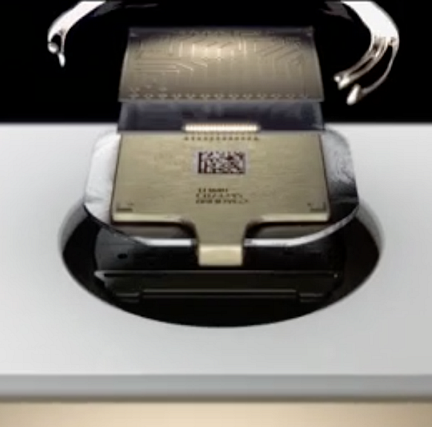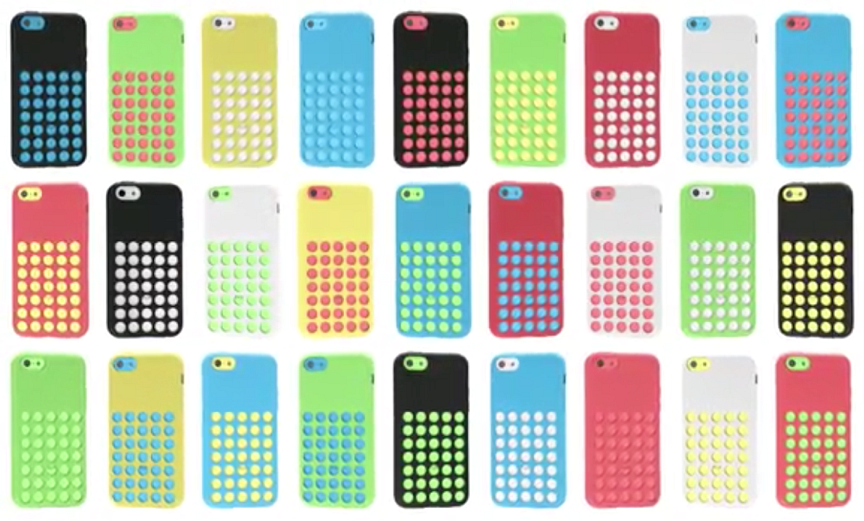|
By Graham K. Rogers

As the iPhone 5s was being announced I cast my mind back to the iPhone 4S when within minutes of the event, there were scores of complaints in some major sources about Apple's lack of innovation; about how the new iPhone was nothing more than a cosmetic update, and so on. I took the time then to look at the specifications and it was clear that this was no quick gloss-over. A lot of changes had been wrought.
This week, I downloaded the video of the proceedings at the Apple Town Hall and watched Phil Schiller go through three major areas in which the iPhone 5s had been improved: performance, with the new A7 processor; the camera that has a number of significant changes; and security, with the unique fingerprint checking technology.
Needless to say, as with the iPhone 4S, the first reports expressed disappointment, and many suggested that Apple had done nothing but another gloss over: surely the color changes were all that had happened.
Some people must be wilfully blind.
 As usual some only saw the colours or the fingerprint sensor without grasping what that could mean with online purchasing, and never examined the rest of the changes that always do occur with the iPhone updates, such as a processor that is twice as fast as the last one, and paves the way for reduced reliance on other chip makers.
As usual some only saw the colours or the fingerprint sensor without grasping what that could mean with online purchasing, and never examined the rest of the changes that always do occur with the iPhone updates, such as a processor that is twice as fast as the last one, and paves the way for reduced reliance on other chip makers.
In the processor alone - double the speed, more than two times as much power - there is a clear performance line that is crossed. More than this however, is an implication that, as some of us hoped when the first A-series processors appeared, Apple may soon not have to rely on the output of the usual chip makers, like Intel.
In addition, as I have commented a number of times before, by designing its own processors, Apple is able to include technologies and new features that will take months for competitors to examine and then repeat. Most notable with the A7 is the move to 64-bit computing which has several implications for the way the devices will be able to work in the future. It will take several months for any manufacturer to catch up to this, even if the operating system and the apps are able to run as 64-bit by then.
I did cover several points about the camera and security in the item I wrote yesterday (Cassandra: Apple Announcements (2) - Schiller and the iPhones), so there is no need to reinvent that wheel. However there is a good discussion of the fingerprint technology, some possible drawbacks and a couple of useful extra ideas in an article by Andrew Cunningham on Ars Technica
- One of the many technologies that Schiller did not discuss, and Craig Federighi was also silent on, was on a slide at WWDC: iBeacons. This is said to be a way for the user to be alerted to events or offers in (for example) a shopping mall, using Bluetooth technology - the iPhone 5s has Bluetooth 4.0. There are a couple of excellent descriptions online by Hari Gottipati on GigaOM and by Jeff Blagdon on The Verge.
The article on The Verge has an embedded video that explains how a PayPal beacon would work, although the GigaOM item links to a YouTube video that gives a better idea of the devastating potential of this new technology.
- Also making waves in the last couple of days is the M7 processor: a motion sensor. These sound similar to Epson's Inertial Measurement Units which are widely used in medical applications where they can be attached to patients to accurately measure movement without limiting motion or feeling obtrusive.
The M7 appears to have related uses in terms of checking a user's body movements and the data can then be used in a variety of applications. While sports applications are already arriving with the release of Nike + Move, more are likely to follow, and we may expect others with health related uses.
Some solutions are already being mooted and in an item on MacNN, ideas as diverse as maps use and wireless detection are suggested, for example, "When driving, the M7 will . . . prevent a 5s from trying to join nearby Wi-Fi network".
A lot of people, including some of the experts in Wall Street, were disappointed by the lack of a cheap iPhone. Apple does not do cheap. I had thought (wrongly) that the rumoured iPhone 5c was destined for China, but colour also starts with "C". There have been many positive comments in the street (not Wall Street) and doubtless it will sell.
There are some who are disappointed, but many of these were misled by supposedly authoritative comments who convinced them that the cheapo iPhone was coming. Not so, and Charles Cooper has a look at this and why, he thinks, it does not matter. People want iPhones and the sales figures (not market share) show this.
Also commenting on the iPhone 5c and its importance in the Apple ecosystem is Casey Johnston on Ars Technica, although what he and others miss is that this is not just the iPhone 5 in a plastic coating: the frame (and hence antenna) is changed and the camera has had a similar update - although not identical - to the iPhone 5s.

Wall Street may not see the idea that profit is good, preferring to cite income as the measuring stick. I can remember two jokers in a company I worked in a few years ago in London, who often talked about reducing the Net profit to improve the Gross profit. The whole basis of the company's management and operations centred round Gross profit. Making a real profit was not important. Apple makes real profits: more than other companies in the IT field, quarter after quarter.
Top of the list in Wall Street myopia is - not for the first time with Apple - Jim Cramer (report by Lee Brodie at CNBC) who was more than a little sarcastic over just the cosmetic changes he saw Apple had come out with after criticising Tim Cook, which is par for the course these days.
A colleague referenced Mercedes-Benz when looking at a bare comparison of three smartphones in the US, comparing a model that the car maker put out with another from Toyota with similar basic specifications: but clearly, as he pointed out, this was not the correct way to compare the two cars. While looking at Wall Street and pricing, Rene Ritchie on iMore also uses a car maker, in this case Porsche. It has a small share of the market, but its products are carefully tailored and no one would suggest that Porsche was unsuccessful in the way Wall Street is implying that Apple is without a cheap iPhone.
I saw a useful quote in a message retweeted by Horace Dediu: "Wall Street is most disappointed in Apple for not introducing cheap phones that lose money like the rest of the mobile phone industry."
Other Items
One of the things I mentioned in my examination of Phil Schiller's iPhone presentation was the way that one of the videos highlighted the industrial processes. Other examples of this are the iPhone 5 with the making of the body and the MacBook Pro 17" where battery making technology was shown. While some only see the pretty colours of the body, there is a lot that Apple improves behind the scenes that improve the industrial processes and thus add to profitability.
After the event I saw that the sapphire lens was of some interest as Apple has a patent for a fusion Process that can add a sapphire laminate layer to the cover glass of devices. Patently Apple outlines this in its article on the subject.
In the first report on the event this week, I covered the point about the release of iWork on new devices as free apps. Richard Devine on iMore comments on the effect this could have on Microsoft who are so late at producing Office for the iPad that it is irrelevant now. He adds that even Paul Thurrott seems concerned.
Rubbing its virtual hands, this morning, was a report from MacDaily News concerning the news that Dell had bought back its shares and was going private. The comment that Michael Dell made about Apple years ago, "What would I do? I'd shut it down and give the money back to the shareholders," has sort of rebounded and MacDaily News - which has commented on this over the years as the relative positions of the companies changed - is happy.
On TUAW, Michael Grothaus reports "Apple quietly discontinues Cards app for iOS" although no one here would have noticed. Thailand was not on Apple's favoured nation list for this and Cards had never been available here. It is suggested that users switch to iPhoto, although those here trying that will find that this is also not available. Make it yourself, print it out as a TIFF or PDF and take it to a decent printing shop.
Already I am finding that some apps are being updated to be compatible for iOS 7 or for the iPhone, such as Snapster, Slo-Pro, Clip Crop and the IKEA catalogue.
Endnotes
A report via a Tweet, that originated in a Thai publication that covers Apple and Macs suggested that, as in previous years, there will be iPhones on sale in Mahboonkrong as from 23 September. The stated price is 60,000 baht (just under $2,000). Some people who want the show rather than the phone, have money to burn.
One of my students may well be in that group as he tells me he is off to Singapore next Thursday evening to line up there for the iPhone 5s. I wish him luck as already there are reports that numbers of the device are likely to be restricted. I did remind him that Rule 1 in my class is "Keep Graham happy," so hope that he does buy one and I am able to have an early look.
And of course I want one. While I had previously stated "black", seeing the silver and also the gold - I could not imagine why Apple would be so gaudy - have changed my mind. These are tastefully done, and I do not know which I would prefer.
See Also
|





